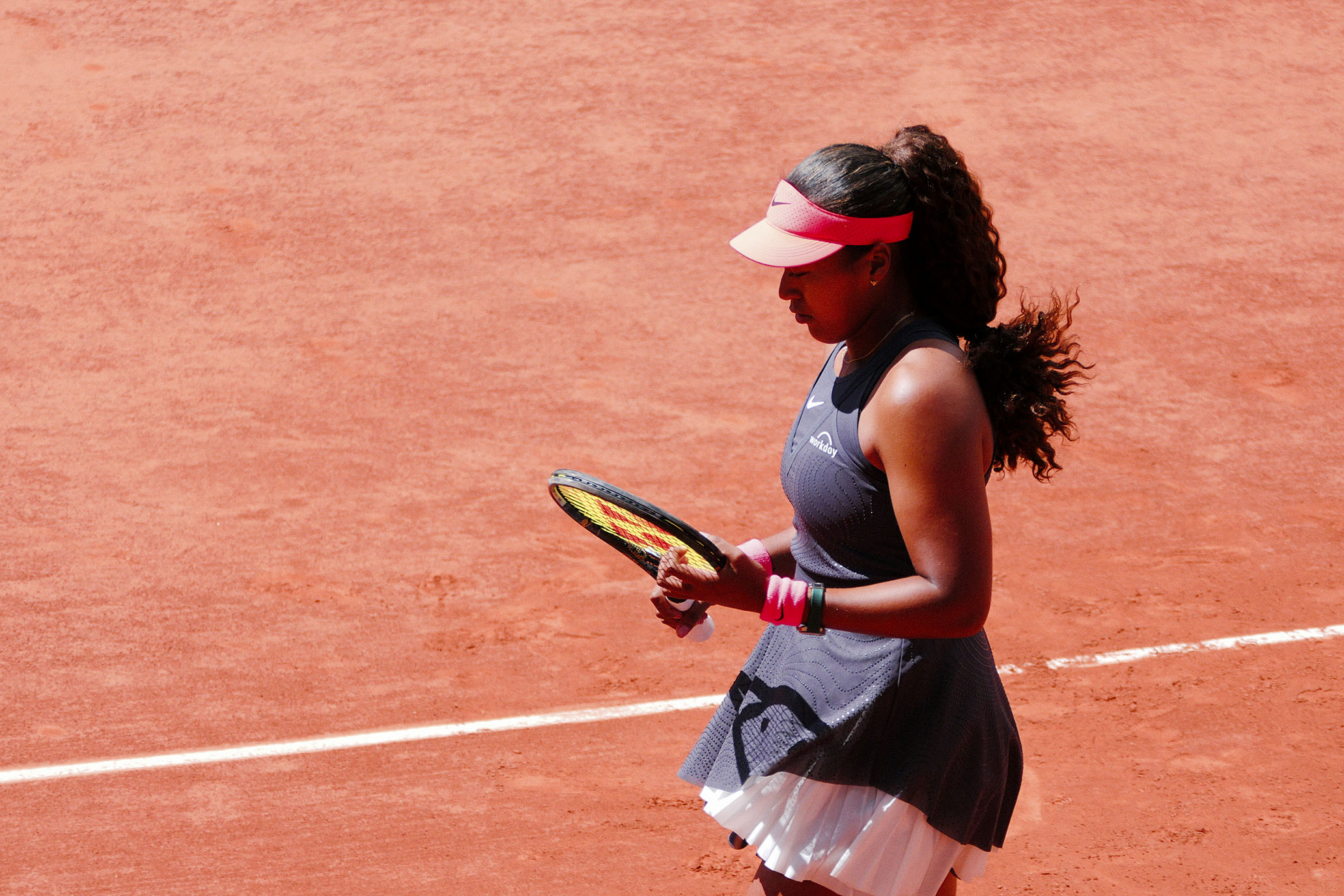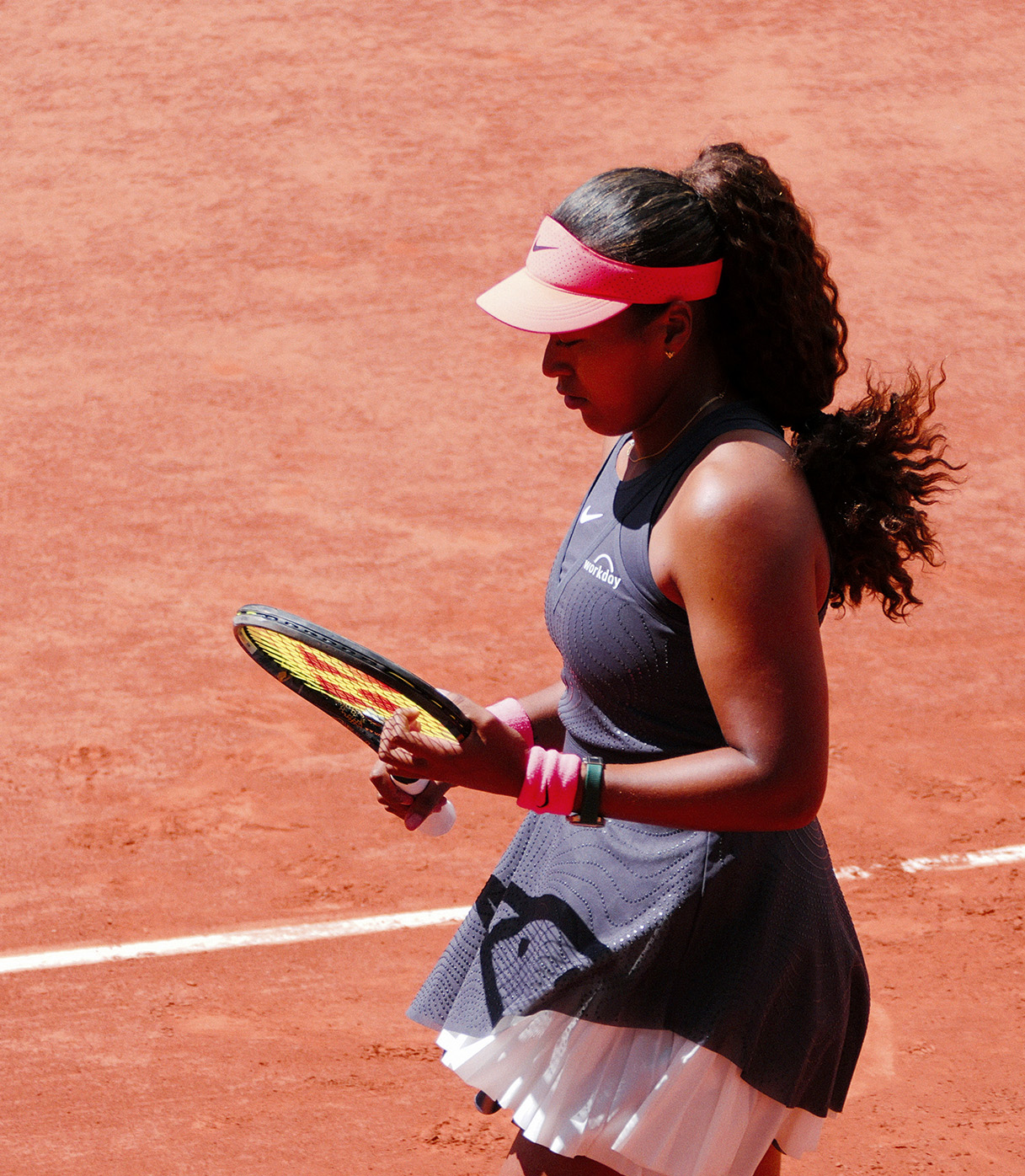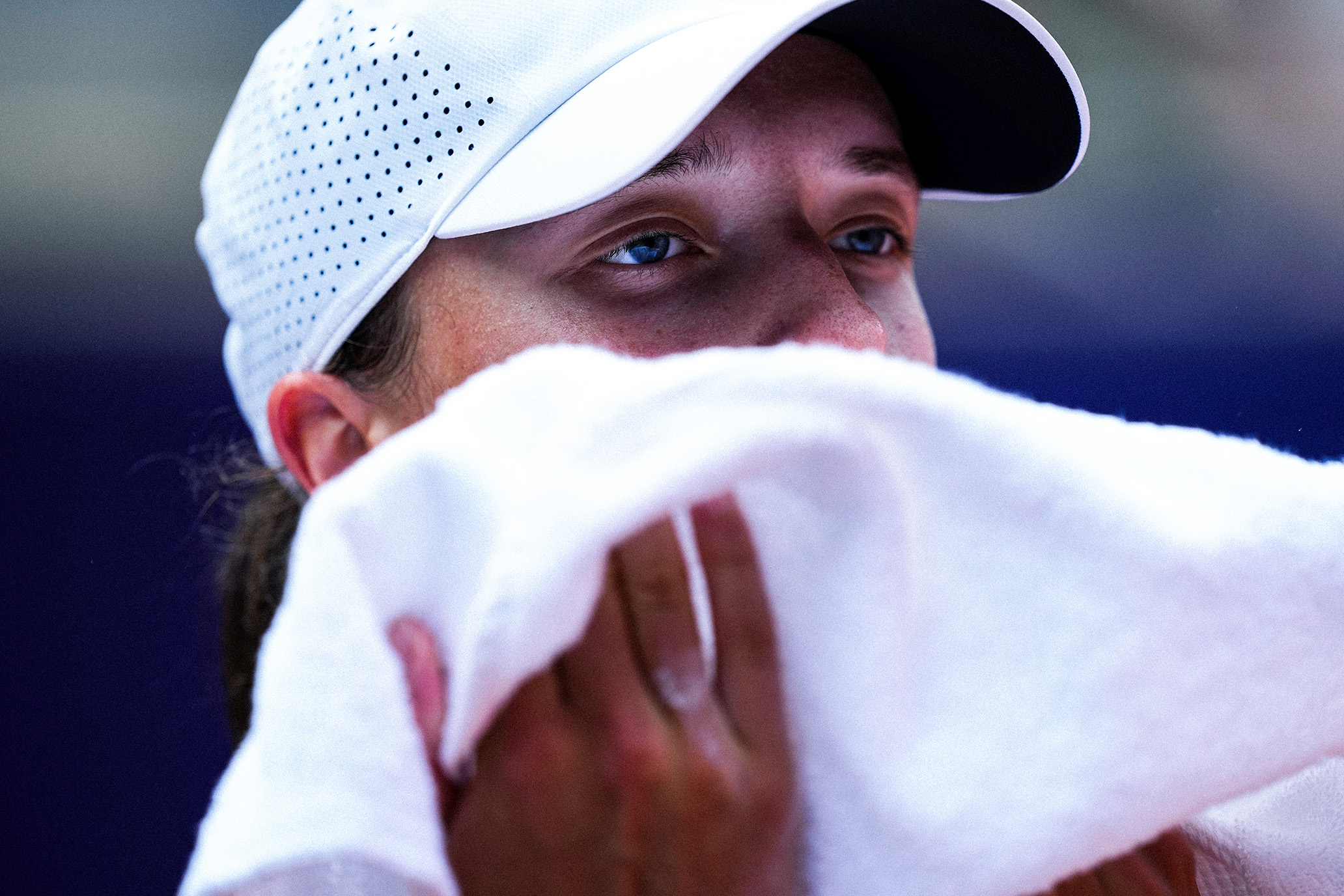A Red X
A Red X
Naomi Osaka has good reasons to be proud of herself.
Naomi Osaka has good reasons to be proud of herself.
By Ben RothenbergMay 30, 2024

Naomi Osaka finds her focus during her first round match against Lucia Bronzetti. // Craig E. Shapiro

Naomi Osaka finds her focus during her first round match against Lucia Bronzetti. // Craig E. Shapiro
As I watched Naomi Osaka early in her match against top-ranked Iga Swiatek on Wednesday afternoon, it was the voice of Naomi’s role model Serena Williams that echoed in my head.
“I have had a big red X on my back since I won the US Open in ’99,” Serena had said at the 2022 US Open, her farewell tournament. “It’s been there my entire career, because I won my first Grand Slam early in my career.”
That “red X” —that mark, that target, that burden—of being the star, the player to beat, had been stamped on Serena for decades. Only at her very last tournament, she said, did she feel free from it at last.
The most recent bearer of a red X in women’s tennis was Naomi Osaka. At some point in late 2020 or early 2021, through a combination of off-court activism and on-court dominance that gave her a nearly Williams-esque level of cultural resonance, Naomi inherited that red X from Serena. Perhaps it was handed off in the semifinals of the 2021 Australian Open, when Naomi dominated Serena in straight sets, effectively ending Serena’s last real chance to win that elusive 24th Grand Slam.
Whenever the handoff happened, the strain that the red X caused Naomi was apparent and well-documented. She struggled on court and off, mentally and emotionally. She was celebrated about being open with her struggles, but she has not been the same best-in-the-world player, results-wise, since.
With time away from the top of the ladder, the red X has faded from Naomi. Whether anyone else has inherited it since is debatable (did some lowercase version of the X cause Ash Barty’s early retirement?), but it isn’t Naomi’s burden anymore.
Naomi’s freedom, finally having no cross to bear, was immediately apparent as her second-round match against Swiatek began Wednesday afternoon under the closed roof of Court Philippe Chatrier. Not since Naomi first became a Slam champ or first took on the red X has there been a match in which so little was expected of her. Oddsmakers had Naomi as something like a 12-to-1 underdog, the same sort of odds the obscure Roberto Carballes Baena is getting to beat Djokovic.
That assessment seemed fair. All her best tournaments, historically, have been on hard courts. Naomi has been fairly whelming this season, neither under nor over. She’s had some solid wins but has reached only one quarterfinal in nine tournaments so far this year (helped to that stage in Doha by a walkover).
“The results aren’t resulting right now,” Naomi said Wednesday of her season so far.
And in Swiatek, Naomi was against the tournament’s prohibitive favorite. The three-time French Open champion’s long winning streak in Paris is mirrored by her active match-win streak this clay season, coming into Roland-Garros with recent titles in Rome and Madrid after completing the Dinara Double. Swiatek beats opponents with consistency and completeness, often baking 6–0 and 6–1 sets into her scorelines.
But instead of feeling daunted or defeated by her dim chances, Naomi appeared lightened in many ways. She swung freely from the beginning of the match, playing with a clarity she has rarely shown in recent years. She looked lighter physically, too: She flew around the red clay court swiftly and comfortably, perhaps showing the benefits of taking recent movement lessons from a ballerina. As could be expected, she has gotten noticeably fitter during each successive month of her return from maternity leave; her fitness has often strongly correlated to her results during her career.
On Wednesday, Naomi was playing with the clean mind of a player who had never worn that red X at all. Naomi, the four-time major champion, played with nothing to lose against the other four-time major champion, and the effect was glorious. With still conditions under the Chatrier roof, Naomi pounded eight aces to Swiatek’s zero. She hit 54 winners against just 38 unforced errors.
After losing a tight first set, Naomi was suddenly running away with the match, winning the second 6–1—handing Swiatek a reversal of her usual scoreboard dominance—and racing out to a 4–1 lead in the third set.
After not converting a break point for 5–1, Naomi held for 5–2. Naomi had a 15–30 lead but badly missed a short forehand.
When Swiatek held and put the match on Naomi’s racquet at 5–3, suddenly the weight of the occasion seemed to arrive all at once. After putting herself within one point of victory, Naomi buckled. Easy shots were missed repeatedly. Other choices were second-guessed out of panic. The last five games, and the match, all went to Swiatek. 7–6(1), 1–6, 7–5.
The red X won’t reappear on Naomi after a loss, but she loudly reannounced herself as a player ready to tangle with the best once more. And more softly to herself, in her journal, she reoriented the shape into a plus sign.
“In it today I just wrote: ‘I’m proud of you,’” Naomi said of her journal entry after the match. “And I think for me, like, saying that to myself, it gives me a lot of power, because normally—not normally, but sometimes I curse myself out in my head, and it’s quite a negative feeling. Yeah, I would just say I’m proud of the journey. I’m hoping, hopefully it will get more and more positive.”
Ben Rothenberg is the author of Naomi Osaka: Her Journey to Finding Her Power and Her Voice.


